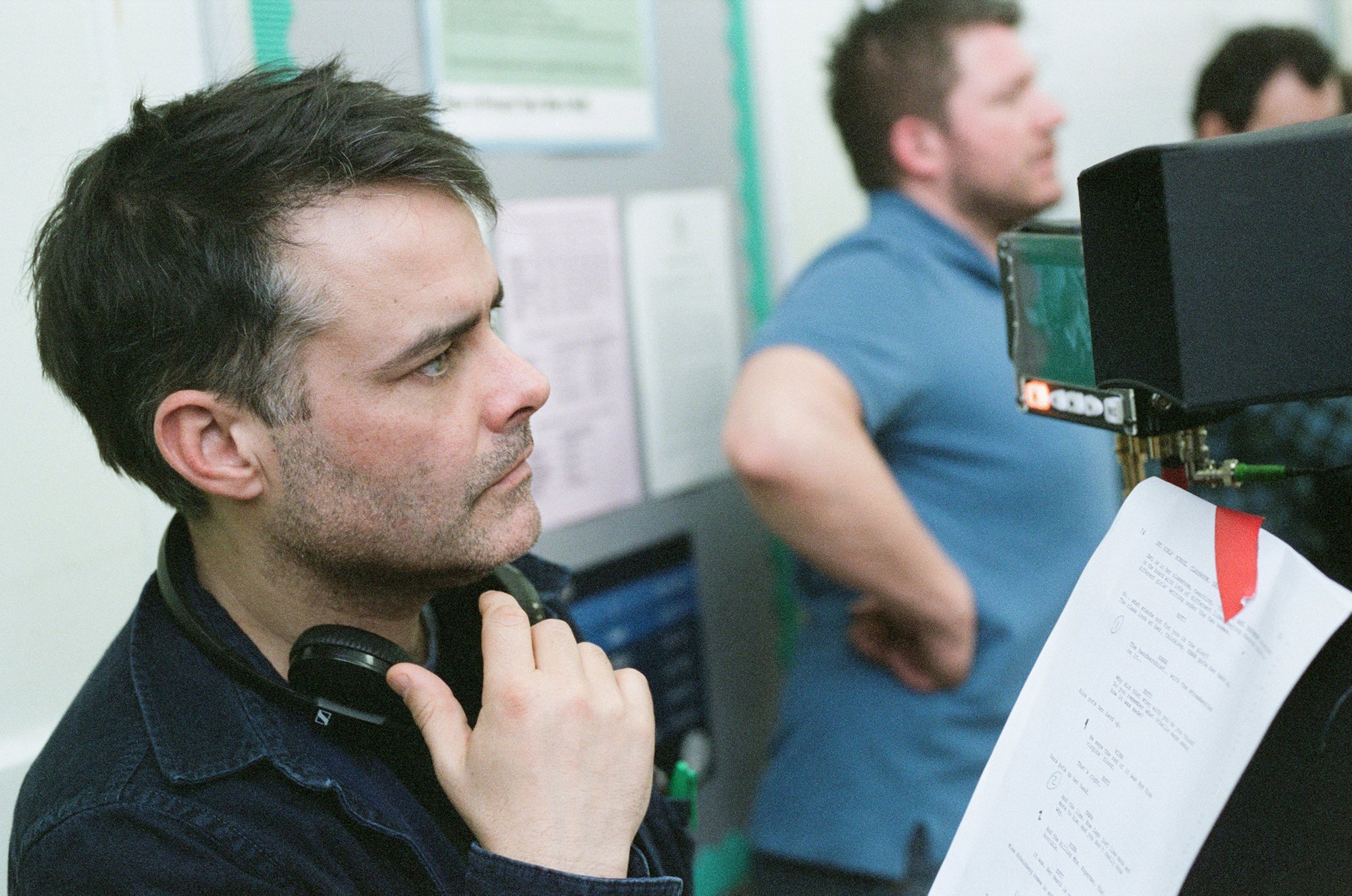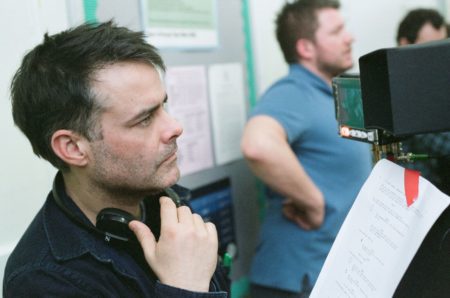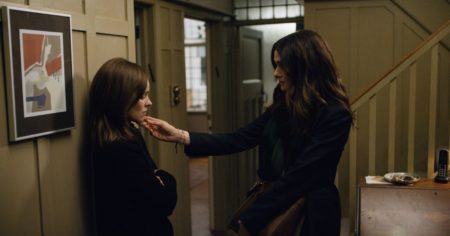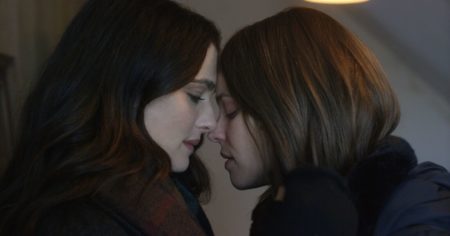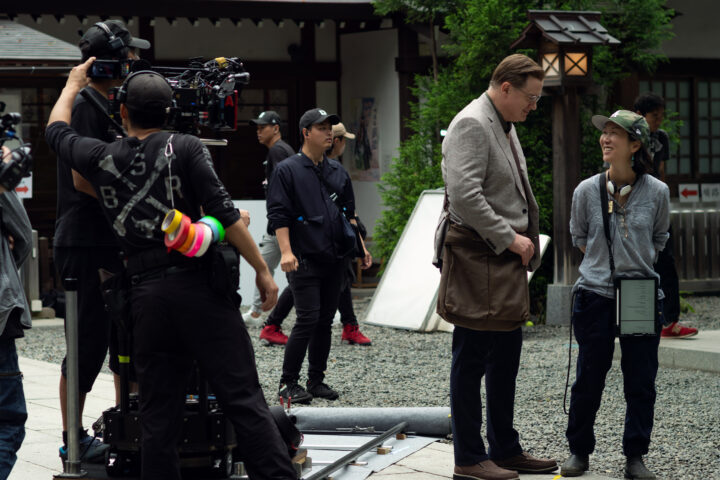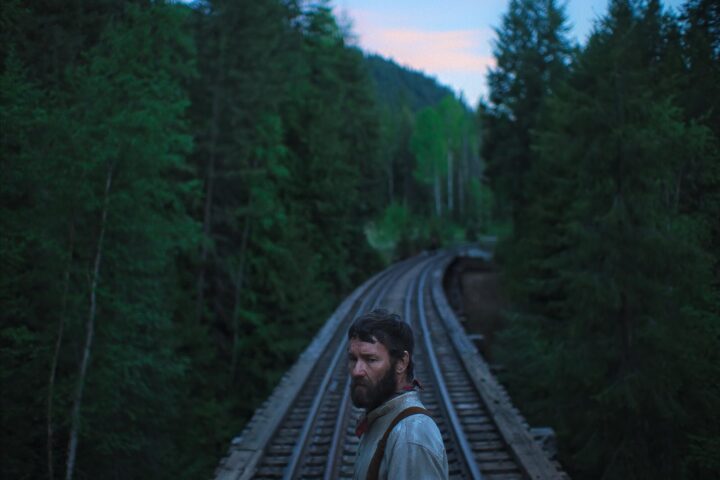In his last three films—Gloria, A Fantastic Woman and now Disobedience—Chilean filmmaker Sebastian Lelio has explored the struggles of outsiders standing aside of established communities, mores and social constructs. In the process, he has also written a collection of indelible female characters who embrace unorthodox identities, sometimes at great cost, and won a 2017 Oscar.
His new film, Disobedience, stars a blazing Rachel Weisz as a successful New York photographer who returns to the London Jewish orthodox community of her upbringing after the passing of her estranged rabbi father.
This homecoming causes shockwaves in the community, particularly upon the rekindling of a clandestine affair with a former friend played by a never-better Rachel McAdams. And then Lelio, who co-wrote the screenplay, introduces a startling Alessandro Nivola as the man in between them—a rabbi on the rise, married to Esti and questioning his ability to understand his wife’s conflicting emotions.
Both actresses are at the tops of their respective games, and as their connection heats up they have a scene of passion that will be talked about and remembered for both restraint and intensity.
I caught up with Lelio recently to discuss Disobedience, its themes of identity and sacrifice, work with his actresses and his approach to constructing a very specific world, and one very different than his own.
You’ve made three films now that deal with outsiders going up against established social mores or institutions, this one specifically set in London’s orthodox community, for which you employed a team of consultants for authenticity of detail. When I saw the film, that was certainly important, but the personal story felt, to me, felt even more compelling. What was the balance between those for you?
When I started writing this I was petrified because I am neither Jewish nor British. It was also going to be my first film in English, so I wondered how I was going to survive this one. Then I thought of the story in more mythical terms. It was a story of a princess who comes back from exile after the king has died to the land where she was expelled. And the throne is empty. And in these few days of funeral rituals, the world will be turned upside down. So that was my way in. I said I would take care of the cultural texture as I progressed. Then we started working with consultants during the writing process.
So I was trying to take care of the architecture of the story and to understand the characters while I was learning about the traditions and mannerisms. And then at some point during pre-production, the number of consultants increased to probably twelve, so we were really trying to get the cultural texture right to concentrate on what I think I cared about more, which were the characters and what they were going through.
The movie opens with a very pointed speech from the aging rabbi about angels, demons and free will. It is quite a jumping off point thematically.
We knew the film needed to start with the rabbi and it was important to know him. And it took a long time to understand what that speech was going to be about. It came out of the chapters of the book. Each chapter starts with a fragment of the scriptures and a little analysis that comes after that. So this was one of those, but I came to it later in the process.
The film’s pinnacle of intensity comes during an extended scene of intimacy between the two women, which is quite daring. What is not shown is most effective here. Often when we see nudity, the line between actor and character dissolves, and you chose not to include any.
I personally think that the scene is the heart of the film. In the script it is not as long as it is in the film. It says, “They make love.” It’s not as specific as in the film. I knew it was about duration; about time spent. And it had to be very, very intimate and about the faces. We live in a moment where we are exposed to so much information and nudity that we can see everything. Everything has lots its weight and value. No one knows what is what anymore. So, this was an opportunity to connect with real eroticism while avoiding nudity. Could that be something doable?
Everything came from me. I storyboarded the entire scene and shared it with the two Rachels a few weeks before shooting and explained the plan behind it. It was basically the idea that we needed to find very specific acts for the scene to be memorable. Because everyone has access to anything and nothing is memorable anymore. I wasn’t making it for me. I was there for them. And that changes the entire point of view. Usually the sex scenes are at the service of the dominant gaze. And in this case, it was at their service.
I was struck by a brief moment of choreography where the actresses are kneeling on the floor; I hadn’t seen a kiss choreographed as such prior.
Behind her.
Yes, kissing her from behind. Let’s talk about the look of the film. It has an intense sort of desaturation throughout and it’s almost as if the color has been removed from the frame, either from DP Danny Cohen as he shot the film or as it was tweaked in post. Could you talk about why it is so cool and detached in a way that your other films perhaps have not been?
Yes, that’s Danny Cohen’s great photographic mind. He grew up not far from that neighborhood, just like Rachel Weisz did. So, they would say, “Do you remember that tree? I used to climb it.” And they were talking about their childhoods during the entire shoot. And Danny was telling me how he felt being Jewish when he was a child; how those worlds felt for him and those environments and colors and textures. He went for that; to rescue that memory of a very flat- in terms of plain palette world, which is almost flavorless.
The great actor Allesandro Nivola is given a complex character in Dovid.
Technically, the narrative is built with three lines, running through Esti and Dovid. And sometimes it’s Ronit, whom we start with and who takes us into the land of Oz. Sometimes it’s the three of them and sometimes it’s the two of them. So it’s kind of like a baroque music piece, if you will. And one tends to think it is going to be about the two Rachels, but it’s a triangular story. And we have the space to really feel Allessandro’s character. He is going through quite a dilemma as well. And I really like that toward the climax of the film his character takes over and somehow everything depends on what he will say. So, it’s quite an unexpected twist when he says, “You are free.”
And then there is almost a moment of triangular reconciliation.
One thing I wanted to achieve was this mutli-climactic finale where you have the triple hug, then the taxi moment that is the second possible ending, and then the one in the cemetery. The endings overlap. I know sometimes that can be problematic, but I like that. I can’t help it.
Rachel McAdams is heartbreaking here conveying a schism between identity and religion. In concluding, the film seems to suggest that she can accommodate both. Is that idealistic?
I don’t know that it is suggesting that. I am not sure. Because we see her in a very vulnerable position. She is more naked than ever and more exposed. And maybe that is where her new power comes from. But that is what makes her so vulnerable at the same time. It’s a paradox. It’s open. We don’t know. She might go back with him. She might move close in the neighborhood. She may find a new synagogue. I don’t think she will go to New York. But things will change. It is an awakening. You see the characters starting to favor a new understanding. Even Nivola’s character, Dovid, says in his speech, “I don’t have sufficient understanding.” Toward the end, Ronit and Esti have a little bit more understanding.
Rachel McAdams has an inner quality that makes you be on her side always. I thought that was going to make Esti’s character interesting because how can you suppress that? Or repress that? Conceptually, Ronit and Esti have always somehow been the same woman—one side of her went away and lost her origins but gained her individual freedom while losing the community. And the other one stayed but lost herself and touch with who she really is. So, they are the reverse reflection of one another.
You have a remarkable ability to create empathy for the protagonists in your films.
I care for them and I am interested in the characters, but I am interested in the actors; the person that is interpreting the role. So, what I am trying to capture in the role is that intersection but mainly what the actor brings with him or her. Because I am trying to use what they have as the material. So, I think that is one of the sources of this empathy.
You’ve said that you want to inspire a particular feeling in the viewer. What is it?
I usually say that trying to avoid the question related to messages, because I think of films more in experience terms. It should be a journey strong enough that you are so immersed that you are almost living it. You can do whatever you want with whatever you experience in your life, and that experience is there. And I think the offering of an experience of spectators.
A Fantastic Woman became a cultural landmark and won an Oscar. Were you aware at all that it would become such? And can you share some thoughts on Daniela Vega?
No, of course I did not know. Now that time magazine has chosen Daniela as one of the 100 most influential people last year in the category of “icon,” I was like, “Yeah!” I remember when I met her I picked her up at the hair salon where she was working, and what I saw was an icon. You know? She came out I was like, “Whoah! She is fantastic.” She always had that quality. She did not have much experience, but she was already a force of nature and a real artist—a singer, she had some acting experience, a hairstylist, a chef; kind of like a renaissance artist. It was great to be able to work with her and be able to shape that wild force and I think that the value of the gesture of having cast her for the film became one of the most important gestures of the film. It became mainly the most important.
